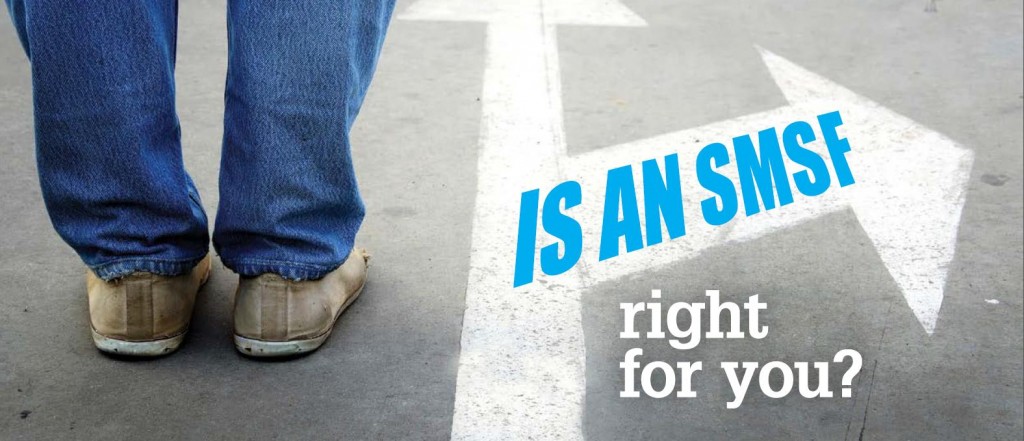Is an SMSF right for you?
More than 30,000 self-managed superannuation funds are started each year by ordinary Australians determined to steer their own financial ship. So is it time you took control of your financial destiny too?
The latest figures show there were 534,176 SMSF’s as at June 2014 – an increase of 29 per cent in just five years.i SMSF’s account for more than a third of Australia’s superannuation kitty.
And it’s not just older Australians starting their own fund. In 2013 the median age for new SMSF trustees fell below 50 for the first time, as more people in their 30s and 40s embraced the DIY concept.
Surveys have consistently shown that people choose a SMSF because they want more control over their money and greater flexibility in the choice of investments. If you want to hold real property inside super, then a SMSF is the only way to go.
But SMSF’s are not for everybody. Most importantly, you have to be prepared to accept more responsibility, both legal and financial, than you would with a public fund. You also need to have the time, money and inclination to make running your own fund worthwhile.
When is an SMSF viable?
A study by actuarial group Rice Warner found that it was not cost effective to have a SMSF with less than $100,000. The Australian Taxation Office (ATO) estimates that the average expense ratio for an SMSF with assets between $100,000 and $200,000 is 4.1 per cent, or between $4110 and $8220 a year.
According to the ATO, the average assets per SMSF member stands at $523,814. At this level, running your own fund is more cost effective than putting your money in a public offer fund.
Rice Warner says that even if you were to farm out both the administration and the investment decisions, the average operating expense ratio drops to 1.34 per cent a year – or between $6700 and $13,400 – once you have more than $500,000.ii
Investment strategy
Superannuation is a long-term commitment so setting up a SMSF is best viewed the same way. Establishment costs including a trust deed can vary but on average are up to $2200, although it can be much less.
When you set up your fund you need to outline your investment strategy and be prepared to monitor and review it on a regular basis.
There can also be traps along the way for the unwary.
For instance, you can’t invest in a property and spend family holidays there before you reach retirement age. Similarly you can’t buy a piece of art and display it in your home.
You also need to keep records of all your transactions and conduct an annual audit.
Annual compliance costs begin from $1200 to $2400 a year, if you handle everything yourself bar the audit. Costs will be a little higher if you outsource some of the administration and financial advice.
Corporate trustees
Another important decision is the choice of trustee. Only about 23 per cent of SMSF’s have a corporate trustee, with the balance having individuals – mostly mum and dad members of the fund.iii
While a corporate trustee can be more expensive to begin with, it may pay for itself later on. A corporate trustee will automatically continue to run the fund when one member dies. With individual members, the fund must find a new trustee or appoint a corporate trustee.
Choosing assets
To get the most out of your fund, and to ensure your money lasts as long as you do, it’s important to diversify your investments. Aside from cash, SMSF’s can invest in managed funds, shares, property trusts and fixed interest as well as real property and collectables such as artworks.
For those who have the time and knowledge to run their own SMSF, the benefits are many.
If you would like to discuss how you can take advantage of self-managed super, give us a call.
i ATO Self-managed super fund statistical report, June 2014, Australian Taxation Office
ii superguide.com.au/comparing-super-funds/how-much-does-a-diy-super-fund-cost
iii ATO SMSF statistical report, June 2014

